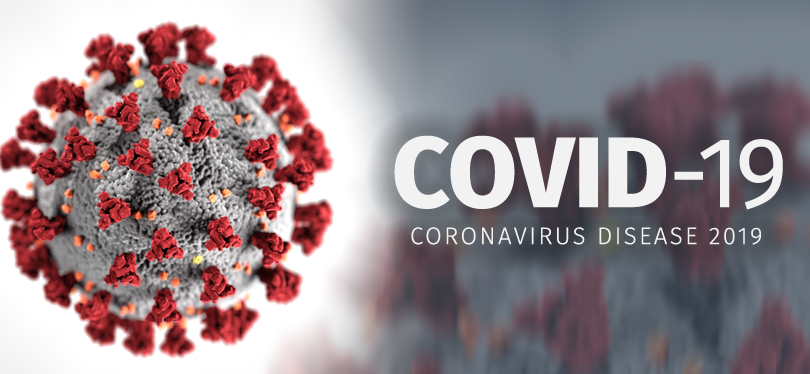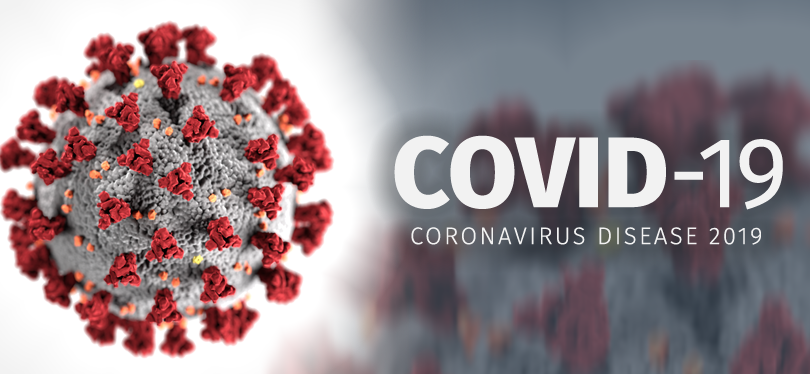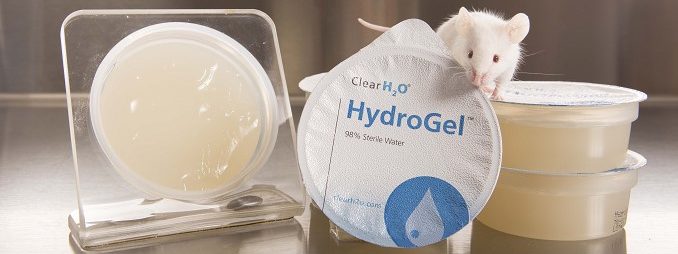Sooner or later, the curve will flatten. Believe it or not, at some point, the COVID-19 pandemic will pass and we will be transitioning back to, hopefully, a new and better normal. Businesses and schools will reopen, and PIs, students and all non-essential workers will be back to the lab. So how do you set yourself up for success? What are the steps to take to pick up where you left, and to bounce back?
During the pandemic, many PIs were asked to discriminate between the irreplaceable strains and those who can be found and sourced elsewhere, and to communicate this information to the animal care staff. Knowing which mouse strains are critical, the animal care staff can closely monitor those animals and communicate back to the PIs if they see any developing issues or challenges in the health status occurring in those colonies. Making sure you have an accurate inventory and a relevant plan for this type of colony is an important part of routine management, but becomes even more important in a crisis situation. Indeed, not having access to their colonies, the PIs depend on the animal care staff and veterinarians to understand those colonies and how they need to be managed for the continuity of their research.
Cryopreservation of unique strains is a very important part of colony management, and is strongly recommended in all institutions as part of their risk mitigation plan to protect their research. Once a strain is cryopreserved, the live colony can be discarded, reduced to a minimum number or be put on maintenance. Standard maintenance consists of 3-6 breeding units, with removal of the pups at weaning, and only keeping the number of young animals that are necessary to replace the older breeders. The peak breeding age for mice is between 6 weeks and 6 months of age, although many can go beyond that point. Thus, replacement of 1 breeding unit per month is all that is necessary for keeping the colony going.
Now that things have slowed down a bit, take this opportunity to plan your future research and mouse colony needs. Read and learn as much as possible on which mouse model is the best to use for your research. Check if there are models different than the one you have been using that could be useful to complement the work you have already been doing, or even if a change of direction in the research could be advantageous. If the mice of interest are live somewhere, at a vendor or collaborator, make arrangements to agree on a delivery timeline, or schedule to place your order to make sure to get the mice when you need and are ready for them. If the mice of interest are cryopreserved, then now would be the time to start the cryorecovery process which takes about 3-4 months.
Another way to expand your mice colonies fast is to use in vitro fertilization (IVF). With this technique, a large number of females are superovulated to produce a large number of oocytes, which are then inseminated with frozen or fresh sperm. The embryos are then transferred into pseudo pregnant females (females that have been mated with vasectomized males). This produces a large cohort of age-matched animals, ready to be used for a study. This technique can save significant time and resources compared to a standard colony expansion program.

Whatever your situation or the technique you choose, your colony needs to grow fast, with a minimum of breeding challenges, giving the maximum number of animals in the shortest period of time. There are many things you can do to enhance your colony breeding performance, check our Breeding Support Guide for more details. Nutrition, in particular, is an essential component to healthy pregnancy, lactation, weaning, and re-breeding. Some nutrients are required for the development of the foetus and pups, and for the health and breeding condition of the female: iron to support the increased blood volume, omega-3 for development of the nervous system, calcium for the bones, folic acid for the neural tube formation, and protein for overall growth. ClearH2O’s DietGel® Prenatal contains all of these important nutritional elements and studies have confirmed its efficacy to increase litter size and survival, and decrease cannibalism. This supplement also decrease the time to first litter, and help breeders rebreed more quickly. Check our Breeding Support Blog Series for more information.
COVID-19 is not the first coronavirus pandemic. In 2002, an outbreak of a severe acute respiratory syndrome (SARS) spread worldwide. Both diseases, SARS and COVID-19, are caused by a strain of coronavirus, SARS-CoV and SARS-CoV-2 respectively. Mouse models play a critical role in the development of vaccines and other treatment for diseases. Coronaviruses infect their host and enter cells by binding to a receptor, angiotensin-converting enzyme 2 (ACE2), present on the outer surface of cell membranes of different organs (lungs, arteries, heart, kidney, and intestines). However, human and mouse ACE2 are structurally different enough that the coronavirus cannot bind to the mouse receptor ACE2, and thus cannot infect them.

In 2007, Dr Paul McCray from University of Iowa and Dr Stanley Perlman from Carver College of Medicine published a study in which they and their team developed a mouse model to study SARS, by introducing a transgene expressing human ACE2. These mice thus express human ACE2, and are able to be infected by the disease. While useful at the time, this model was then cryopreserved.
This new model proved to be useful for studies of pathogenesis and for the development of antiviral therapies. For researchers who want to study COVID-19, this mouse model is available through The Jackson Laboratory, which has also published an article and a broadcast with information on this model. This model can be used to test effective doses of vaccines or antivirals. There is a broad spectrum of antivirals and other FDA approved drugs, which are not specific to CoV, but could be effective in treating the disease: infected mice are a very effective first pass to see how efficiently those agents can clear the virus, and can be informative on which treatments could be useful in humans. However, not one model can answer all the questions, and different models may be needed to completely understand the disease, such as TMPRSS2. Cyagen has a collection of potential useful models. Taconic is subsidizing distribution of specialty transgenics including an Ace2 knockout mouse.
Check out our blog series on Managing your Research Laboratory during a Pandemic:
Part I: How to Care for your Laboratory Staff and Facilities During a Pandemic
Part II: How to Care for Your Laboratory Mice during a Pandemic
Part III: How to take care of yourself during quarantine
Part IV: How to plan for rodent colony repopulation after a pandemic
PLEASE LET US KNOW HOW & WHAT YOUR LAB IS DOING IN THE COMMENTS BELOW!
Where are my mice?
During the pandemic, many PIs were asked to discriminate between the irreplaceable strains and those who can be found and sourced elsewhere, and to communicate this information to the animal care staff. Knowing which mouse strains are critical, the animal care staff can closely monitor those animals and communicate back to the PIs if they see any developing issues or challenges in the health status occurring in those colonies. Making sure you have an accurate inventory and a relevant plan for this type of colony is an important part of routine management, but becomes even more important in a crisis situation. Indeed, not having access to their colonies, the PIs depend on the animal care staff and veterinarians to understand those colonies and how they need to be managed for the continuity of their research.
Cryopreservation and its advantages
Cryopreservation of unique strains is a very important part of colony management, and is strongly recommended in all institutions as part of their risk mitigation plan to protect their research. Once a strain is cryopreserved, the live colony can be discarded, reduced to a minimum number or be put on maintenance. Standard maintenance consists of 3-6 breeding units, with removal of the pups at weaning, and only keeping the number of young animals that are necessary to replace the older breeders. The peak breeding age for mice is between 6 weeks and 6 months of age, although many can go beyond that point. Thus, replacement of 1 breeding unit per month is all that is necessary for keeping the colony going.
SEE CLEARH2O’s WEBINAR RECORDING FROM 4/28/2020!
Advantages:
- Cryopreservation protects the mice in case of disaster (hurricane, flood, pandemic, etc…) or facility failures (power outages, water supply disruption, etc…), but also protects individual projects from genetic drift, phenotype change or the development of breeding issues that put the integrity of the colony at risk. The cryopreserved material is usually divided among multiple liquid nitrogen tanks in multiple locations for extra safety and security.
- Cryopreservation is also a way to adhere to the 3R’s in research (replace, reduce, refine). As research gets redirected, or goals change, some lines might not be needed and cryopreservation becomes a way to refine the overall number of mice used in research, and make sure that researchers are only maintaining the colonies that are needed. If needed again, those animals can be brought back even years later, reducing the need for live animals being maintained during that lapse of time.
- Cryopreservation can also be used to “clean” a mouse strain from any opportunistic pathogen, and ensure always having high health status mice. Indeed, pathogens are infectious agents that can cause overt disease (sick mice) or alter phenotypes and biologic responses during experimentation. Cryopreservation is a prudent insurance policy for all the investment made in developing critical mouse models.
There are 2 types of cryopreservation:
- Embryo cryopreservation. This technique is better suited for strains that are homozygous, contain multiple genetic mutations, or of a unique genetic background. Indeed, most cryorecoveries are done on B6 backgrounds, although others are available as well. If you have a mixed background or specific background you want to keep, cryopreserving embryos will insure that the strain stays on the background of interest when recovered. Similarly, if your colony is homozygous, preserving embryos will allow the strain to stay homozygous when recovered, cutting off breeding time. You will need to provide both males and females from your strain for this type of cryopreservation.
- Sperm cryopreservation is a more recent development: only 2 males are needed to bank straws of sperm, and the process is relatively inexpensive.
Plan, Plan, Plan!
Now that things have slowed down a bit, take this opportunity to plan your future research and mouse colony needs. Read and learn as much as possible on which mouse model is the best to use for your research. Check if there are models different than the one you have been using that could be useful to complement the work you have already been doing, or even if a change of direction in the research could be advantageous. If the mice of interest are live somewhere, at a vendor or collaborator, make arrangements to agree on a delivery timeline, or schedule to place your order to make sure to get the mice when you need and are ready for them. If the mice of interest are cryopreserved, then now would be the time to start the cryorecovery process which takes about 3-4 months.
Another way to expand your mice colonies fast is to use in vitro fertilization (IVF). With this technique, a large number of females are superovulated to produce a large number of oocytes, which are then inseminated with frozen or fresh sperm. The embryos are then transferred into pseudo pregnant females (females that have been mated with vasectomized males). This produces a large cohort of age-matched animals, ready to be used for a study. This technique can save significant time and resources compared to a standard colony expansion program.

Whatever your situation or the technique you choose, your colony needs to grow fast, with a minimum of breeding challenges, giving the maximum number of animals in the shortest period of time. There are many things you can do to enhance your colony breeding performance, check our Breeding Support Guide for more details. Nutrition, in particular, is an essential component to healthy pregnancy, lactation, weaning, and re-breeding. Some nutrients are required for the development of the foetus and pups, and for the health and breeding condition of the female: iron to support the increased blood volume, omega-3 for development of the nervous system, calcium for the bones, folic acid for the neural tube formation, and protein for overall growth. ClearH2O’s DietGel® Prenatal contains all of these important nutritional elements and studies have confirmed its efficacy to increase litter size and survival, and decrease cannibalism. This supplement also decrease the time to first litter, and help breeders rebreed more quickly. Check our Breeding Support Blog Series for more information.
COVID hACE2 model
COVID-19 is not the first coronavirus pandemic. In 2002, an outbreak of a severe acute respiratory syndrome (SARS) spread worldwide. Both diseases, SARS and COVID-19, are caused by a strain of coronavirus, SARS-CoV and SARS-CoV-2 respectively. Mouse models play a critical role in the development of vaccines and other treatment for diseases. Coronaviruses infect their host and enter cells by binding to a receptor, angiotensin-converting enzyme 2 (ACE2), present on the outer surface of cell membranes of different organs (lungs, arteries, heart, kidney, and intestines). However, human and mouse ACE2 are structurally different enough that the coronavirus cannot bind to the mouse receptor ACE2, and thus cannot infect them.

Image and article from R&D systems
In 2007, Dr Paul McCray from University of Iowa and Dr Stanley Perlman from Carver College of Medicine published a study in which they and their team developed a mouse model to study SARS, by introducing a transgene expressing human ACE2. These mice thus express human ACE2, and are able to be infected by the disease. While useful at the time, this model was then cryopreserved.
This new model proved to be useful for studies of pathogenesis and for the development of antiviral therapies. For researchers who want to study COVID-19, this mouse model is available through The Jackson Laboratory, which has also published an article and a broadcast with information on this model. This model can be used to test effective doses of vaccines or antivirals. There is a broad spectrum of antivirals and other FDA approved drugs, which are not specific to CoV, but could be effective in treating the disease: infected mice are a very effective first pass to see how efficiently those agents can clear the virus, and can be informative on which treatments could be useful in humans. However, not one model can answer all the questions, and different models may be needed to completely understand the disease, such as TMPRSS2. Cyagen has a collection of potential useful models. Taconic is subsidizing distribution of specialty transgenics including an Ace2 knockout mouse.
Check out our blog series on Managing your Research Laboratory during a Pandemic:
Part I: How to Care for your Laboratory Staff and Facilities During a Pandemic
Part II: How to Care for Your Laboratory Mice during a Pandemic
Part III: How to take care of yourself during quarantine
Part IV: How to plan for rodent colony repopulation after a pandemic
PLEASE LET US KNOW HOW & WHAT YOUR LAB IS DOING IN THE COMMENTS BELOW!




Leave a comment
All comments are moderated before being published.
This site is protected by hCaptcha and the hCaptcha Privacy Policy and Terms of Service apply.